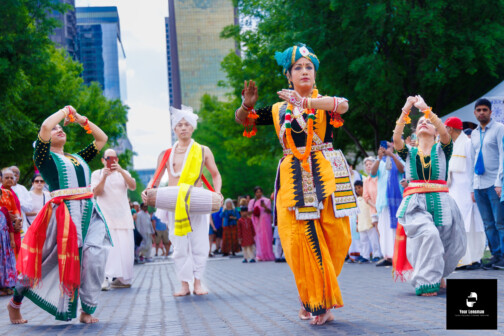MUCH LIKE A West Texas rancher is tied to the crusty earth of his birth or a Central Texan boasts of the beauty of the Hill Country, the residents of the Scottish Highlands proudly call their homeland “God’s Country.” With all due respect to our bountiful Sun Belt state, the traveler to the Highlands would be hardpressed to argue with the Scots’ interpretation of the Creator’s intentions.
The Scots like to call their Highland (a vast area of 14,000 square miles located in the northern and northwestern portions of Scotland) one of the last great unspoiled regions of Europe. That also is hard to dispute, once you see the magnificent terrain: hills (a lush green even in the dead of summer) dotted by trees, heather, and black-faced sheep fat with wool; and the lochs (bodies of water that connect with the sea), as appealing as any in the world and virtually empty of boating traffic. And all this beauty is sparsely populated by only 330,000 people. (That’s an average of about 23 people per square mile.)
Ironically, the small population that makes the Highlands attractive to tourism has long concerned the British government. For nearly two decades, the government, through the Highlands and Islands Development Board, has sunk hundreds of millions of dollars into promoting the economic and social development of the area in an attempt to reverse the exodus to the Eastern Scottish coast near Aberdeen, where American corporations have created a job boom drilling for oil in coastal waters.
Although there’s very little nightlife, and restaurant fare is ordinary (except for the regional specialty of salmon) the compari-tive lack of people, plus the hills, mountains and access to the sea, make a trip to the Highlands ideal for the outdoorsman. Organized or individual activities include golf, fishing and sea angling, hunting, sailing and power boating, snow skiing, hiking and pony trekking. A trip to the Highlands is like a religious experience tor avid golfers who want to visit the sport’s birthplace, and the island’s obsession with the sea makes it an excellent place for sea fishing. When you’re talking about golf and fishing, well, to copy the words of a popular beer commercial, “It doesn’t get any better than this.”
THE PRIMARY PASSAGE into the Highlands is through Inverness, the area’s largest city. Our group flew American Airlines to London and jetted into Inverness on Dan-Air, a small British hopper airline. However, for those who want to see the countryside, BritRail offers daily service from London into major towns throughout the Highlands on a modern high-speed train.
One of the advantages of flying into Inverness is its proximity to one of the Highland’s main attractions, Loch Ness, home of “Nessie,” the famous Loch Ness monster. For 50 years, the 23-mile-long loch has been the subject of both scientific and amateur study to verify the existence of creatures allegedly sighted by thousands over the centuries. Although good photographic evidence is lacking even today, anybody who lives near the loch knows someone who has seen something, often described in reports as a large hump-backed animal.
Tony Harmsworth, curator of the Loch Ness Monster Exhibition in the small village of Drumnadrochit, admits that he has never seen such a creature, but says he is “totally committed to the animal’s reality,” and claims studies have shown that the loch itself has ample underwater vegetation and sea life to feed such large creatures.
The exhibit, which includes photographs and information compiled by numerous scientists, is quite professionally done. However, it’s a bit disheartening to leam that the residents of the tiny village couldn’t resist the temptation to make a buck. Adjacent to the exhibit is a store that sells everything from Nessie T-shirts to rubber and stuffed models of the monster. Perhaps the residents of Drumnadrochit could better convince their guests that the monsters exist had they not resorted to such garish commercialism.
From Drumnadrochit, we made the three-hour drive to Oban, a small city on Scotland’s eastern coast that is called the natural capital of the Highlands. Oban is also a fer-rying point to the islands of Mull and Iona. We stayed overnight at the Knipoch Hotel (six miles south of Oban) an attractive Georgian building along the shores of the Loch Feochan, an arm of the sea that stretches four miles inland. Like nearly all the hotels in the Highlands, the cost of lodging at the Knipoch includes a four-course dinner each evening. Although many of the hotels and country inns throughout the Highlands are reasonably priced, there exists an even less expensive alternative for the road-weary traveler. It’s called bed and breakfast, and throughout the entire island of Britain, travelers can rent a room for the night in a local household and eat breakfast the following morning.
IT’S ODD THAT chamber of commerce types often try to suggest to traveling journalists that what they actually experience on a trip is not the way it really is. For example, the promotional material we received during the trip politely informed us that moving about the Scottish Highlands and islands was a simple matter. “The Scottish Highlands and islands are often perceived as rugged, unfriendly territory where scattered islands, mountains and glens make travel arduous,” read a release given to our group. “But nothing could be farther from the truth.”
Go back to Webster’s, guys. The farther we got away from Inverness, the more “arduous” the traveling became. The best you can hope for in the Highlands is a two-lane highway, and we often found ourselves traveling down twisting, turning, hilly one-lane roads with small passing lanes each quarter-mile or so. The lanes are there in the event that one meets head-on with another vehicle, which means you might have to back up a couple of hundred yards rather frequently. But actually, negotiating roads should come as little concern for outdoor types who know that the ends often justify the means.
While we were in Oban, we toured the Oban Glass Works and visited the Sea Life Centre nearby to get a close-up look at the sea life that inhabits the ocean along the eastern coast of Scotland. The marine life featured at the Sea Life Centre ranged from blue sharks, catfish, cod, Dover sole, flounder, hermit crabs, and grey mullets to such dangerous predators as conger eels, monkfish, sea scorpions and the venomous weevers. During the past 10 years, Scotland has experienced a rapid increase in the farming of such species as marine flatfish-turbot, Dover sole, sea bass and salmon. Throughout the Highlands, the lochs are dotted with tanks and cages that signify the rise in fish farming.
Oban offers the best shopping in the Highlands, and tourists can get good deals on textiles, knitwear and handicraft items such as silver and gold jewelry, pottery and glass. The city’s most distinguishable landmark is the McCaig Tower, a folly that from a distance looks like a scaled-down model of the Roman Coliseum, conceived by Scottish banker John Stuart McCaig. McCaig began building the tower in 1897 as a means of finding work for unemployed masons in the area, but the project ended unfinished when he died in 1902.
While we were in Oban, we were also fortunate to watch the Camanachd Cup Final Shinty Championship. Shinty is a 2,000-year-old Highland game that looks like a game of hockey being played on a soccer field. But it’s a much rougher game than hockey. Shinty is played 12-to-a-side, the players hitting a small leather-covered ball with a stick called a caman(resembling a hockey stick, but thin-shanked, with a curved head) into goals at the end of each side of the field. The goals resemble soccer goals-they’re 12 feet wide by 10 feet high. Unlike hockey, there is no restriction in lift-ing the stick, so players can be clubbed from their heads to their shins. At times, players fell to the ground in extreme pain for 10 to 15 minutes, only to be ignored. They eventually hobbled off the field or got back into the action.
THE ISLE OF MULL, a45-minute ferry ride from Oban, offers a peek into Scottish history, with two of the area’s most interesting castles. Torosay Castle is owned by Sir David Guthrie James, whose wife’s sister is married to former U.S. Ambassador Aver-ill Harriman. James, a chatty and cordial man, is a famous World War II figure, a former British Naval officer who escaped from a Nazi prisoner of war camp.
Equally impressive is Duart Castle, the home of the Maclean Clan. Two Spanish officers were held prisoner in the castle when the Spanish Galleon Florencion sought shelter in Tobermory Bay in 1588. While we were on Mull, we also visited the Old Byre Heritage Museum, where we learned what it was like to live in 19th-century “black houses,” a sort of thatched-hut existence similar to that on the American frontier. One member of our group apparently offended the director of the museum when he asked how 12 or 13 people ever tolerated living in a single-room hut with their cows. “They loved it,” the director snapped. Each to his own.
The Island of Iona, another 30-minute ferry ride from Mull, is known as the birthplace of Christianity in Scotland. It was on this remote island that St. Columba landed in 563 to establish one of the first Christian churches in Scotland. The remains of some 68 Scottish kings are said to lie in the cemetery resting beside the restored Iona Abbey. At the abbey, we met a student from Minnesota who said he was chosen in a rigorous competition to study for a year with members of the Iona church community. In fact, Iona is so remote that the owner of the local hotel said the first time his children went to a large city, they were absolutely terrified of the traffic. It was for that reason that we had to chuckle when the American studying at the Abbey very sincerely informed us that he had instantly abandoned his studies in Paris to jump at the Iona opportunity.
“I came here for the social life,” he said.
One man’s social life may be another man’s boredom, but it is virtually impossible to overlook the compelling physical beauty of the Highlands. Once the eyes have seen it-the quaint villages, the early Christian sites, ruined and still inhabited castles, the thick green landscape cut by rough dry-stone walls and twisting single-lane roads- they will not forget.
Get our weekly recap
Brings new meaning to the phrase Sunday Funday. No spam, ever.
Related Articles

Arts & Entertainment
‘The Trouble is You Think You Have Time’: Paul Levatino on Bastards of Soul
A Q&A with the music-industry veteran and first-time feature director about his new documentary and the loss of a friend.
By Zac Crain

Things to Do in Dallas
Things To Do in Dallas This Weekend
How to enjoy local arts, music, culture, food, fitness, and more all week long in Dallas.
By Bethany Erickson and Zoe Roberts

Local News
Mayor Eric Johnson’s Revisionist History
In February, several of the mayor's colleagues cited the fractured relationship between City Manager T.C. Broadnax and Johnson as a reason for the city's chief executive to resign. The mayor is now peddling a different narrative.


